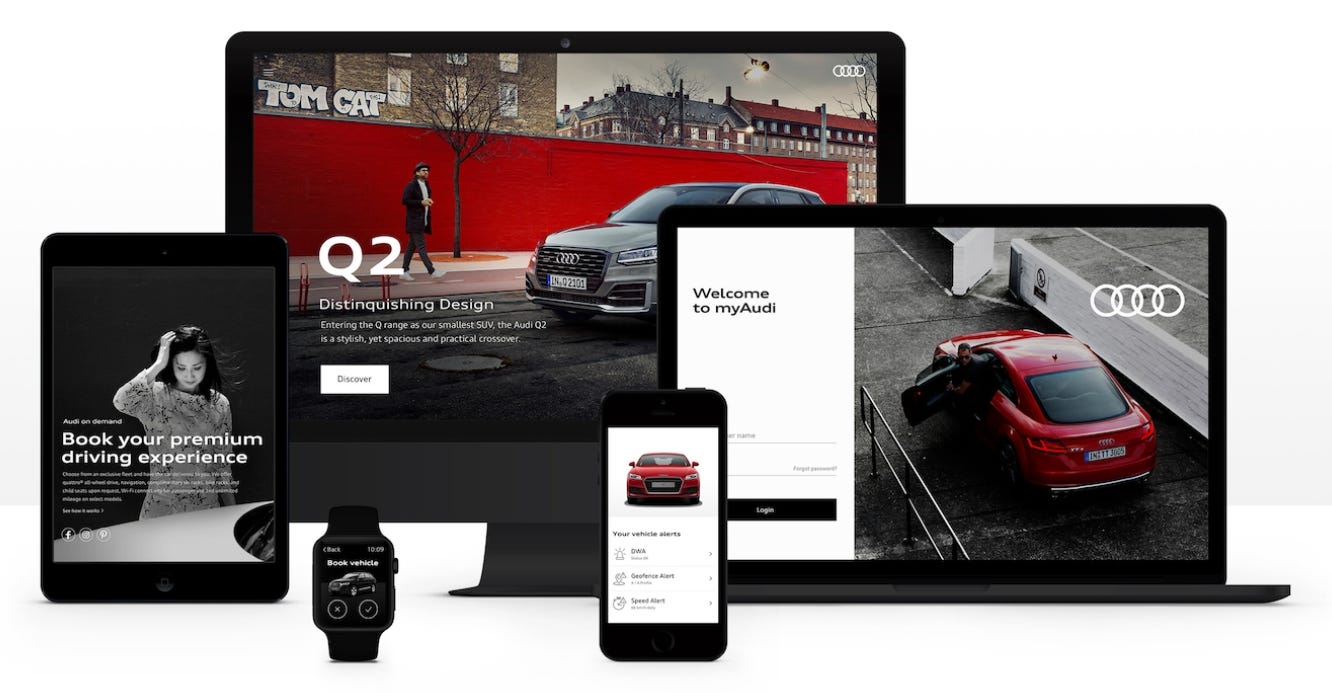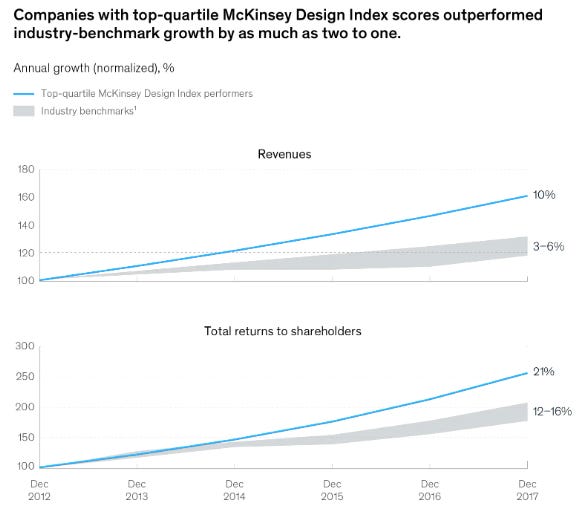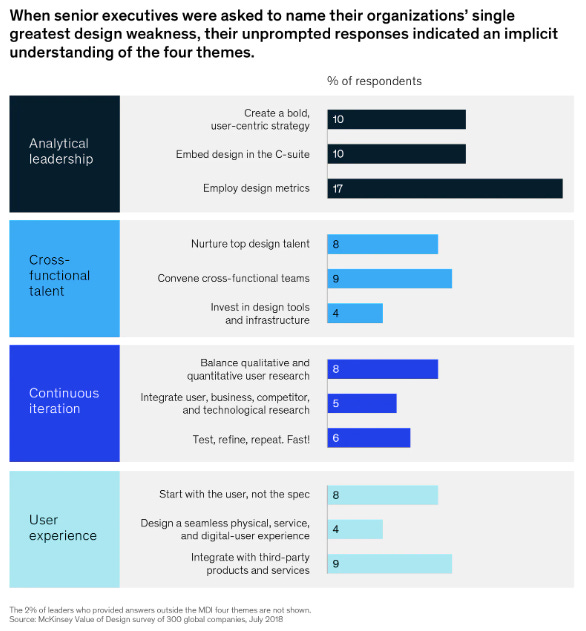Technically, in the web of information, UX designers are designing for the product - us. That’s what we are. Turning people into the product, at this scale, is very new. Enticing and caressing us to stay and engage with the company’s offerings, making everything so smooth, and offering every reason to share the experience with our friends... and doing this for billions of other people… The world hasn’t seen this before. For our purposes here, think of Google, Facebook, and every other successful business in the attention economy as being expert manipulators. Their success relies on eliminating any reason possible for a user to complain or leave while achieving their purposes with us. Along the way we give up nearly everything about ourselves and who we are in the most frictionless, discreet manner.
We now live in a world where only the most vigilant among us are truly at the steering wheels of our attention. The rest of us are hypnotized in any number of directions. Sure, web 2.0 offers more utility than diversion, however it’s the diversions that occupy the vast majority of our time using it.
There is abundant reasoning to be disturbed by the attention economy and the web 2.0 infrastructure enabling it. As much as we might like to hate on web 2.0, there’s one thing that is simply factual:
Web 2.0 did more for user experience design than any other technology.
The level of sophistication now found in the field of UX design, is very much a new innovation. It’s precisely because of web 2.0’s mastery of the user’s experience that we’ve seen an old business model (selling data) go to the extent of data commoditization that it has.
Web 2.0 built a bridge between psychology and design.
There are human factors that define the effortless and intuitive experiences of great products. In fact, the degree to which the field of UX has been based on our human factors has reached a level of sophistication never seen before. As the internet has developed, it has turned web designers into practitioners of cognitive psychology en masse. Design, as a field, developed in ways it never had before. A bridge was built between psychologists and designers all over the world. The role of UX Researcher emerged, pulling Masters’ and Doctors of Psychology into the design field. Amazing books on human factors have distilled huge amounts of psychological research into actionable principles for designers. Designers and developers have been studying this literature and applying it to their work.
Our success in web3 requires the same level of commitment to our users.
We are tasked with understanding the human factors of design, in general, as well as how our users interact with our products, specifically. This commitment to our users will be what produces the web3-specific design standards that will unlock a new exponential growth period for the industry.
And this time it’s to give users individual sovereignty, not take it from them.
Web 2.0 Has Defined User Preferences
This was said in the year 2000 (the era of web 1.0) by one of the pioneers of internet usability, Jakob Nielsen:
“Users spend most of their time on other sites. This means that users prefer your site to work the same way as all the other sites they already know.”
It has since been coined as “Jakob’s Law” and is one the laws of UX. In fact, it’s the first one.
The giants that have been monetizing people’s attention, naturally, have been the ones to be most influential in setting industry standards of design. Users expect products to work like the ones they’re used to. If users are spending most of their internet usage on these products, it’s their expectation that other products work like them.
Within such a dynamic, it makes all the sense in the world that entire industries would have to fine-tune the science of designing experiences in their unique contexts. Across the board, the technology underneath has needed to disappear. The applications didn’t just need to be usable, but intuitive, surprising, and offer moments of delight.
Want to dissect UI components and understand the merit of their design? Look here at how much thought Google puts into every component they use in all their products. The same goes for every experience users have with products under the Meta umbrella (here).
User Expectations Have a Higher Bar for All Industries
“But web3 doesn’t have the same aims at capturing maximum-length user engagement, or user data collection and monetization. How would this be relevant to web3?”
For web3, user data isn’t the monetization strategy, and engagement isn’t the core offering. The user experience is indirectly relevant to the bottom line. This indirect relationship that our industry has to design is a key reason why it is “user hostile”.
It doesn’t matter if you’re not in the business of selling user data. The tide has risen. Rise with the tide, or sink. Design has become a business strategy, because if you don’t care about UX, someone else will and you’ll lose. People want to be valued and if you’re not accounting for them in your product development process, they’ll feel it and will keep an eye out for alternatives.
Duolingo isn’t about monetizing user data, but look through their design system. No wonder they’re far and away the most viral language learning app. Atlassian makes productivity tools for teams. What made them the juggernaut they are? Builders love using their products. Again, they’ve dialed everything about their user experience - look. Apple always has and always will use user experience (the term they coined) as their competitive edge. Their design system is UX scripture. Need an example closer to what you do? Here are other design systems from companies who have won their markets by prioritizing their users: Airbnb, Uber, IBM, Shopify, Salesforce, Audi.
“We have a branding expert. We’re good.”
Without usability, every way in which web 2.0 has designed for engagement would fail. Usability is a base expectation. Like the need for a hotel to ensure hot water comes out of the 30th floor shower. If they don’t deliver on that, then it won’t matter how sexy their branding is - nor the chocolates on the pillows. Delivering on the base expectations requires investment and hard work that you cannot fail to deliver on. If you overlook them, you lose trust from your customers and earn negative reviews (because people are more likely to complain about a bad experience than to talk about a good one). Even the dumbest user is smart enough to know whether you care about them. Users hate being required to think about anything not directly relevant to the job they’re trying to perform. If you want them to love you, and share about you, you can’t make them think unnecessarily. ENS Cofounder, Alex Van De Sande, explained,
“Average users don’t care about Ether. They don’t care about your token. They don’t care about backing up private keys or seed phrases. They don’t care about your browser plugin. They don’t care about your gas price or transaction costs… KYC… They just want a normal username and [to] purchase stuff with their credit cards like normal people. They want to own multiple devices and expect them to be in sync.”
It’s after you’ve covered for your users’ base expectations that your impressive branding will have a meaningful effect. Branding might make you feel great about your company’s presentation and it will certainly have a measurable increase in traffic, but you can’t fool anyone to return to an unusable product over time or share it with others.
“But Web3 technology inherently requires new user experience solutions. Web 2.0 design conventions do not provide all of our answers.”
Of course. That is true. However, we still have years to build out the transitional “consumer blockchain” or “web 2.5” where 90+% of the experience overlaps with web 2.0 design standards. As for the truly web3-specific design challenges, it will be the application of UX principles, mostly established from web 2.0, that will guide their formation.
We will not arrive at those web3-specific UX conventions by simply iterating on other people’s open-source code and hiring branding experts to make us look sexy.
UX is Now a Winning Strategy, Regardless of the Business Model
Here are some insights from top consulting firm, McKinsey’s The Business Value of Design. This is (at the time of writing) “the most extensive and rigorous research undertaken anywhere to study the design actions that leaders can make to unlock business value”.
The main takeaway is this:
“The best design performers increase their revenues and shareholder returns at nearly twice the rate of their industry counterparts.”
The long-term, five year study entailed tracking the design of 300 publicly-listed companies representing several industries and countries. After collecting two million pieces of financial data and tracking 100,000 design actions, they performed a regression analysis that uncovered a dozen highest-impact actions that they boiled down to these four themes:
“More than a feeling: it’s analytical leadership.”
“More than a product: it’s user experience.”
“More than a department: it’s cross-functional talent.”
“More than a phase: it’s continuous iteration.”
Here’s how the themes are represented more numerically, with further granularity:
Web3’s Resolve for Improved User Experience
We won’t be able to succeed any differently than how web 2.0 did. Organizational commitment, investment, UX-conducive work environments, and a user-centered product process are parts of the equation. Design is an organizational commitment and central theme of company culture.
There needs to be a meeting of the minds between web3 engineers and designers or we will not make it. That’s what Web3 Usability is all about. Follow @Web3Usability on Twitter.
The Value of UX Credentials in Web3
As much as web 2.0 UX credentials might not impress the typical web3 builder, it is precisely what they need for their ventures. It's hard to put into words how backward the prevailing sentiment is among web3, as an industry, about moving on from UX principles of web 2.0. Only *after* we take them more seriously will we be able to develop the field for our purposes.
If you’re considering making an investment in design for your venture, definitely read McKinsey’s study to understand the business outcomes you can expect from that investment. Consider how a UX teammate could improve your venture. If you do not need a UX designer full-time, then solicit help from a consultant to reveal to you where your blindspots may be.
At the very least, learn what you can about user-centered design, yourself. Subscribe to be notified when great material is published for you in the weeks and months ahead.









This article reminded me of the times of crapy Linux UIs before Ubuntu came out and blew everyone out of the water. From the first day, they took UX seriously and drew their inspiration from macOS; the OS mainly used by geeks and non-conformists got a much broader adoption. Even my dad installed it :)
I think web3 is at a similar stage now. We don't need to reinvent the wheel to be different. We can pick decades of research and use it to bring great UIs and UXs to this space and then innovate on top.